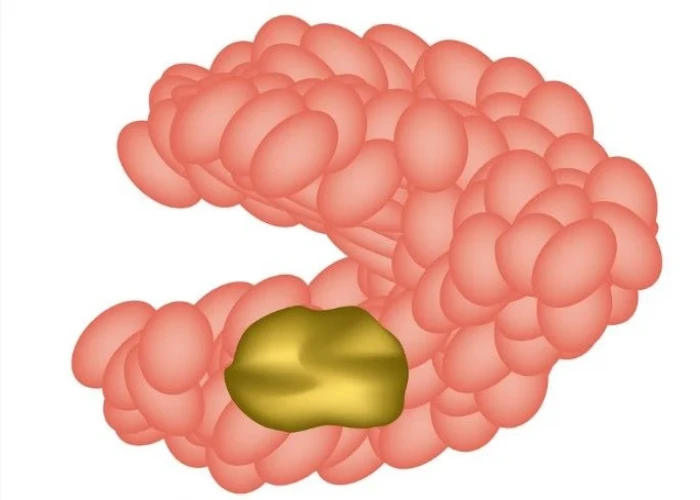 Welcome
Welcome
“May all be happy, may all be healed, may all be at peace and may no one ever suffer."
Vitiligo (Leucoderma)

Vitiligo, also known as leucoderma, is a long-term skin condition in which there is a loss of pigmentation, resulting in white patches or spots on the skin. It occurs when the melanocytes, the cells in the skin that produce the pigment melanin, are destroyed or stop functioning.
The exact cause of vitiligo is not well understood, but it is thought to be an autoimmune disorder in which the body's immune system mistakenly attacks and destroys melanocytes. There may also be genetic factors involved, as vitiligo tends to run in families.
Vitiligo can affect any area of the skin, but it most commonly occurs on the face, hands, feet, and in skin folds such as the armpits and groin. The condition can also affect the hair and the inside of the mouth.
Treatment for vitiligo aims to restore the color to the affected skin and may include topical medications, light therapy, and surgery. Topical medications such as corticosteroids and calcineurin inhibitors can be used to help repigment the skin, while light therapy involves exposing the skin to ultraviolet light to stimulate melanocyte production. Surgery may be an option for those with small patches of vitiligo, and may involve skin grafts or melanocyte transplants.
While there is no cure for vitiligo, treatment can help to improve the appearance of the skin and may slow down the progression of the condition. Additionally, avoiding triggers such as sunburn, stress, and exposure to certain chemicals can help to prevent new patches from developing. Counseling and support groups can also be helpful for individuals coping with the emotional impact of vitiligo.
Research Papers
Disease Signs and Symptoms
- Dry skin
- Pale skin color (pallor)
- Loss of color in the tissues that line the inside of the mouth and nose (mucous membranes)
Disease Causes
Vitiligo
Vitiligo occurs when pigment-producing cells (melanocytes) die or stop producing melanin — the pigment that gives your skin, hair and eyes color. The involved patches of skin become lighter or white. It's unclear exactly what causes these pigment cells to fail or die. It may be related to:
- A disorder of the immune system (autoimmune condition)
- Family history (heredity)
- A trigger event, such as stress, severe sunburn or skin trauma, such as contact with a chemical
Disease Prevents
Disease Treatments
The choice of treatment depends on your age, how much skin is involved and where, how quickly the disease is progressing, and how it's affecting your life.
Medications and light-based therapies are available to help restore skin color or even out skin tone, though results vary and are unpredictable. And some treatments have serious side effects. So your doctor might suggest that you first try changing the appearance of your skin by applying a self-tanning product or makeup.
If you and your doctor decide to treat your condition with a drug, surgery or therapy, the process may take many months to judge its effectiveness. And you may have to try more than one approach or a combination of approaches before you find the treatment that works best for you.
Even if treatment is successful for a while, the results may not last or new patches may appear. Your doctor might recommend a medication applied to the skin as maintenance therapy to help prevent relapse.
Medications
No drug can stop the process of vitiligo — the loss of pigment cells (melanocytes). But some drugs, used alone, in combination or with light therapy, can help restore some skin tone.
- Drugs that control inflammation. Applying a corticosteroid cream to affected skin might return color. This is most effective when vitiligo is still in its early stages. This type of cream is effective and easy to use, but you might not see changes in your skin's color for several months. Possible side effects include skin thinning or the appearance of streaks or lines on your skin.
- Milder forms of the drug may be prescribed for children and for people who have large areas of discolored skin.
- Corticosteroid pills or injections might be an option for people whose condition is progressing rapidly.
- Medications that affect the immune system. Calcineurin inhibitor ointments, such as tacrolimus (Protopic) or pimecrolimus (Elidel) might be effective for people with small areas of depigmentation, especially on the face and neck. The U.S. Food and Drug Administration (FDA) has warned about a possible link between these drugs and lymphoma and skin cancer.
Therapies
- Light therapy. Phototherapy with narrow band ultraviolet B (UVB) has been shown to stop or slow the progression of active vitiligo. It might be more effective when used with corticosteroids or calcineurin inhibitors. You'll need therapy two to three times a week. It could take one to three months before you notice any change, and it could take six months or longer to get the full effect.
- Given the FDA warning regarding possible risk of skin cancer with use of calcineurin inhibitors, talk with your doctor about the risks and benefits of using these drugs with phototherapy.
- For people who can't go to a doctor's office for treatment, smaller portable or handheld devices for narrow band ultraviolet B therapy are available for home use. Talk with your doctor about this option as well if needed.
- Possible side effects of narrow band ultraviolet B therapy include redness, itching and burning. These side effects usually clear up within a few hours after treatment.
- Combining psoralen and light therapy. This treatment combines a plant-derived substance called psoralen with light therapy (photochemotherapy) to return color to the light patches. After you take psoralen by mouth or apply it to the affected skin, you're exposed to ultraviolet A (UVA) light. This approach, while effective, is more difficult to administer and has been replaced in many practices by narrow band UVB therapy.
- Removing the remaining color (depigmentation). This therapy may be an option if your vitiligo is widespread and other treatments haven't worked. A depigmenting agent is applied to unaffected areas of skin. This gradually lightens the skin so that it blends with the discolored areas. The therapy is done once or twice a day for nine months or longer.
- Side effects can include redness, swelling, itching and very dry skin. Depigmentation is permanent.
Surgery
If light therapy and medications haven't worked, some people with stable disease may be candidates for surgery. The following techniques are intended to even out skin tone by restoring color:
- Skin grafting. In this procedure, your doctor transfers very small sections of your healthy, pigmented skin to areas that have lost pigment. This procedure is sometimes used if you have small patches of vitiligo.
- Possible risks include infection, scarring, a cobblestone appearance, spotty color and failure of the area to recolor.
- Blister grafting. In this procedure, your doctor creates blisters on your pigmented skin, usually with suction, and then transplants the tops of the blisters to discolored skin.
- Possible risks include scarring, a cobblestone appearance and failure of the area to recolor. And the skin damage caused by suctioning may trigger another patch of vitiligo.
- Cellular suspension transplant. In this procedure, your doctor takes some tissue on your pigmented skin, puts the cells into a solution and then transplants them onto the prepared affected area. The results of this repigmentation procedure start showing up within four weeks.
- Possible risks include scarring, infection and uneven skin tone.
Potential future treatments
Treatments being studied include:
- A drug to stimulate color-producing cells (melanocytes). Called afamelanotide, this potential treatment is implanted under the skin to promote the growth of melanocytes.
- A drug that helps control melanoctyes. Prostaglandin E2 is being tested as a way to restore skin color in people with vitiligo that isn't widespread or spreading. It's applied to the skin as a gel.
Disease Diagnoses
Disease Allopathic Generics
-
Vitamin B complex
Medicines containing vitamin B-complex.
1 pill/capsule daily after food 2/3 times a day.
-
Ferrous Sulfate
For anemia.
1/2 spoon 3 times.
Disease Ayurvedic Generics
Disease Homeopathic Generics
-
Arsenicum sulphuratum flavum
3X power.
-
Berberis
Q power.
-
Piper methysticum
Q power.
-
Kali mur
6X power.
-
Nitric acid
6, 30 strength.
-
Chelidonium majus
Q strength.
Disease yoga
Vitiligo (Leucoderma) and Learn More about Diseases

Bile reflux

Alcoholic hepatitis

Jaw tumors and cysts

Heart murmurs

Infectious diseases

Persistent post-concussive symptoms (Post-concussion syndrome)

Zollinger-Ellison syndrome

Atypical depression
vitiligo, leucoderma, শ্বেতী (ধবল)
To be happy, beautiful, healthy, wealthy, hale and long-lived stay with DM3S.
